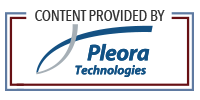Digital transformation has become a buzzword for markets with high-value manufactured products and highly regulated industries. But what is it about digital transformation that draws attention? Is it only digitizing all paper-based processes, or are people hungry for more?
Traceability is an important part of the production process. If you need to trace a customer complaint to identify a root cause, you need to spend time tracking back to every point in the process to find where the error is escaping. Perhaps you need traceability to find out what caused a product recall. Initiating the steps to track back manually, using paper processes is time-consuming and costly.
Transforming traceability procedures to a digital process could greatly impact efficiencies and provide more data for further improvements over a paper-based process. Statistically, companies that utilize digital tools perform better than they had before digitization. This is because they are better equipped to handle traceability complaints using tools that will provide them with relevant data to prevent recurring errors.
In a recent survey that Pleora Technologies conducted with a wide group of manufacturers, it’s surprising to learn that there are still a significant number of key processes that remain manual. Yet, consumers have come to expect higher quality standards in products and brand accountability, fully understanding with more advanced machinery and technology available to manufacturers, that their expectations can (and should) be met.
Consumers are already engaging and relying on traceability services in their day-to-day lives, expecting to receive a photograph with accompanying information like date, time, and address, included in a package notification email, proving a successful delivery. This growing expectation will only compound pressure for quality control and improved traceability for manufacturing.
Good news, it does not need to be complicated. In four steps you can build a digital traceability process.
First, you need a camera.
There are so many choices today when it comes to cameras, from smartphones to industrial-grade machine vision cameras. When picking a camera, ideally you’ll want something that will auto-focus well. It needs to be able to clearly detect and focus on the target so no additional time is needed adjusting the focus. From an image quality perspective, you also want to ensure that you can capture the level of detail you are looking for in various lighting conditions.
Using machine vision-compliant cameras like GigE Vision and USB3 Vision, or UVC-enabled webcam cameras, provide an easy way to interface software using standard protocols. You may think smartphones are a convenient choice, but some facilities do not allow devices on the production floor, and you would still have the challenges of transferring the photos to your database/repository, slowing down processes, and making them less likely to be used consistently.
Then, you need to find a PC
You’ll want a PC that can connect to the camera to retrieve the images. You may want to assign a dedicated PC as a scanning station in a Quality Control area of your factory. Having a dedicated station allows anyone to capture images at any time or access stored images by batch number or barcode.
Step 3, plug in a barcode scanner
Barcodes are used everywhere in the factory, so for the sake of this process, we will assume you already have one. If you don't, remember, a barcode scanner plugged into your PC will come in handy to avoid having to type (or mistype) the product information. Whether you are serializing every product that you are manufacturing or serializing by work order, saving the code with the filename for the image can save so much time in traceability. In minutes, images can be fully searchable based on the product barcode, saving time and effort in future.
Finish off by selecting a repository, either on-premise or cloud-based
You’ll want to be able to compress photos and adjust the compression level to a suitable level, such that you reduce the file size of your photos without losing too much detail. Without compression, you’ll realize that your storage space will be used up pretty quickly. Many cloud storage services allow you to add tags or labels to files for efficient search capabilities.
You might also decide that a cloud isn’t the right approach for your data storage. Although they provide the benefits of not having to worry about setting up servers and applications, or supporting the entire infrastructure, depending on your product policies (ie. highly sensitive data), you may decide that on-premises deployments are best for you.
Looking for something out of the box?
All the pieces to build a traceability camera system are readily available, but the time required for integration and application development with custom software may be too much of a commitment with other ongoing projects and day-to-day duties. Out-of-the-box solutions, like Pleora’s Vaira system with pre-loaded customizable apps including one developed specifically for digital traceability, are an alternative to complex custom-built approaches.
